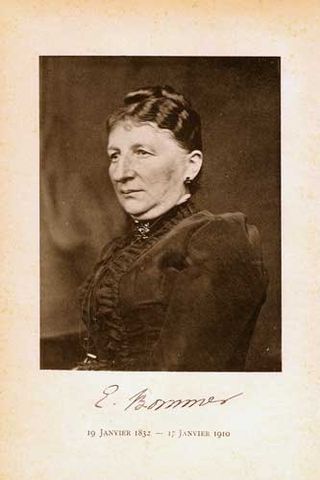
Giacomo Bresadola 14 February 1847 – Trento 9 June 1929) was an eminent Italian mycologist. Fungi he named include the deadly Lepiota helveola and Inocybe patouillardii, though the latter is now known as Inosperma erubescens as this latter description predated Bresadola's by a year. He was a founding member of the Société mycologique de France.

Kickxellomycotina is a fungus grouping. In the subkingdom of Zoopagomyceta Benny, 2007.

Elise Caroline Bommer née Destrée, was a Belgian botanist specialising in mycology, and was the wife of pteridologist and collector Jean-Édouard Bommer (1829-1895), who was professor of botany at University of Brussels in 1872. The standard author abbreviation E.Bommer is used to indicate this person as the author when citing a botanical name.
Armillaria pelliculata is a species of agaric fungus in the family Physalacriaceae. This species is found in Africa.
Maurice Philippe Gaspard Beeli was a Belgian mycologist.
Cystodermella elegans is a fungus species in the genus Cystodermella. It was described in 1927 in Congo.

Marie-Anne Libert, was a Belgian botanist and mycologist. She was one of the first women plant pathologists. She is sometimes referred to as "Anne-Marie Libert."
Albert Gaillard was a French mycologist.

Cantharellus luteopunctatus is a species of fungus in the genus Cantharellus. Found in Africa, it was described as new to science in 1928 by Belgian mycologist Maurice Beeli as Lentinus luteopunctatus. Paul Heinemann transferred it to Cantharellus in 1958.
Georges Jean Louis Malençon was a French mycologist known for his investigations of fungi native to North Africa and the Iberian Peninsula.
Climacodon sanguineus is a rare species of tooth fungus in the family Meruliaceae that is found in Africa.
Marie Louise Marguerite Belèze (1851-1913), also credited as Marguerite Belèze, was a French botanist, taxonomist, and explorer. She collected extensive botanical collections, and is known for her work on the cryptogamic flora surrounding Paris. Some of her plant collections are held at the University of Strasbourg's Herbarium
Maurice Gustave Benoît Choisy was a French mycologist and lichenologist. He was a member of the Botanical Society of France, the Mycological Society of France, and the Linnean Society of Lyon. He was president of the botanical section of the latter society from 1949 to 1950.
Leucocoprinus flavus is a species of mushroom producing fungus in the family Agaricaceae.
Leucocoprinus beelianus is a species of mushroom producing fungus in the family Agaricaceae.
Leucocoprinus elaeidis is a species of mushroom-producing producing fungus in the family Agaricaceae. In the local language, it is commonly known as elela.
Leucocoprinus velutipes is a species of mushroom producing fungus in the family Agaricaceae.
Leucocoprinus submontagnei is a species of mushroom producing fungus in the family Agaricaceae.





